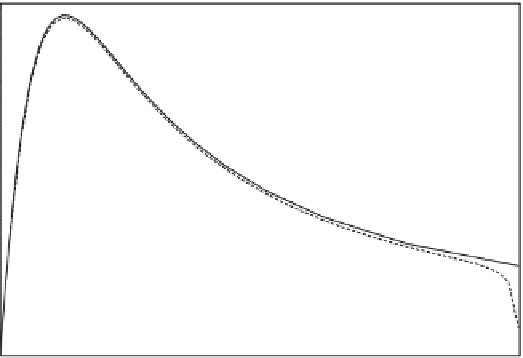Environmental Engineering Reference
In-Depth Information
Optimum Blade Shape C-L = 1 B = 3
0.2
Glauert
De Vries
0.15
0.1
0.05
0
0
0.2
0.4
0.6
0.8
1
r/R
Figure 13 : Optimum shape of a blade.
3 Numerical CFD methods applied to wind turbine fl ow
As a complement to analytical theories and experiments, CFD provides a third
approach in developing applied methods. In its purest form, only the differential
equations of Navier and Stokes (NS):
∇=
·
v
,
(34)
Dv
( 35 )
r
=−∇+Δ=
f
p v
m
0
Dt
together with suitable boundary conditions and a description of the blade geom-
etry is used. Unfortunately this ambitious goal cannot be reached at the pres-
ent time. The main obstacle is the emergence of turbulence at higher Reynolds
number (RN):
vL
( 36 )
Re
=
n
calculated from kinematic viscosity (
v =
1.5 - 10
-5
m
2
/s
-1
for air) and a typical
length
L
and a typical velocity
v
. Present wind turbines have a RN of several mil-
lion based on blade chord. Only Direct Numerical Simulation (DNS) solves the
(NS) without any further modeling. At the present time (2009), only airfoil calcu-
lations up to RN of a few thousands have been carried out at the price of months

























Search WWH ::

Custom Search